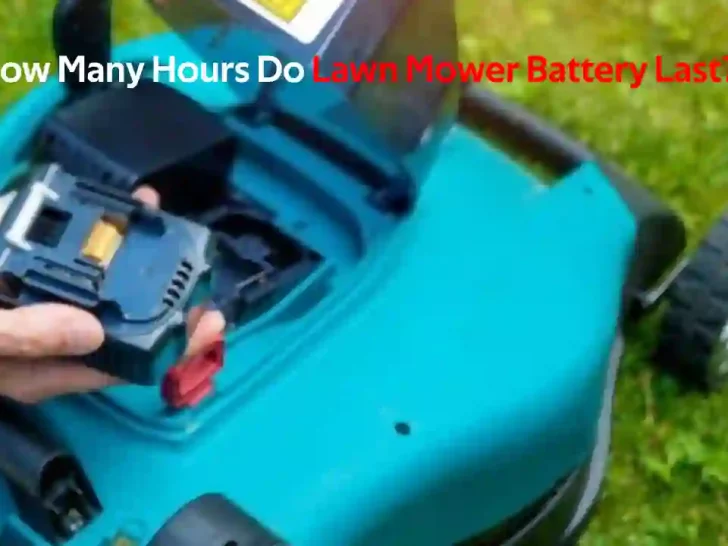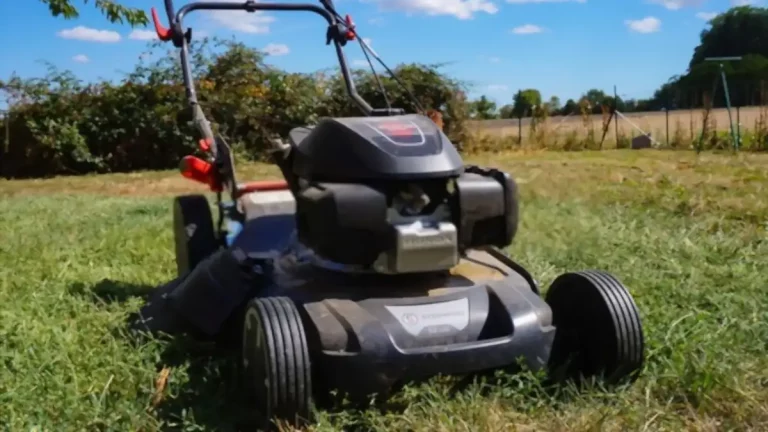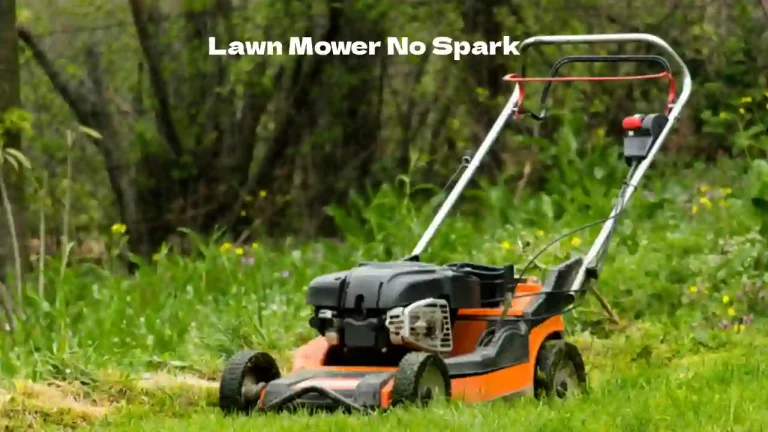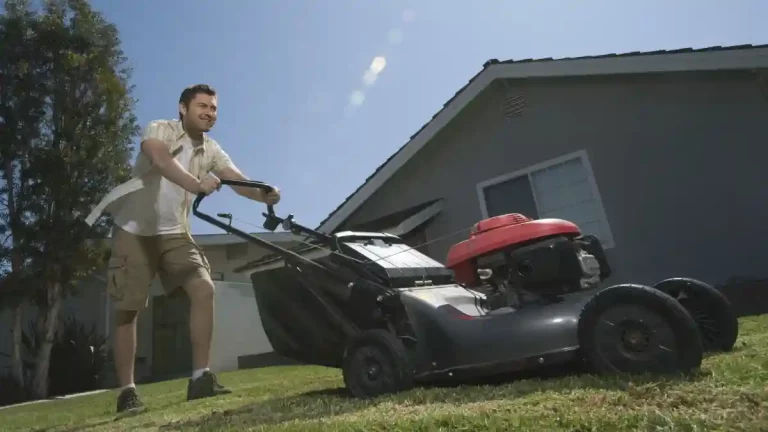Very little is more irritating than trying to start a garden power tool, which worked the last time perfectly and now won’t start.
Sometimes this equipment appears very hardy and runs for multiple seasons, only to stop working when you need them the most, then they seem to break down repeatedly for no real reason.
The causes of your Lawn Tractor won’t starting and not even clicking could be
- Transmission in Gear
- Brake Pedal not Pressed
- Blade Switch / Lever On
- Not Sitting in Seat
- Bad Battery Connection
- Bad Battery
- Sensor Faults
- Faulty Key Switch
- Main Fuse Blown
- Faulty Control Module
Tracing most of the causes of a tractor not starting involves a simple elimination of possible causes – beginning at the potential problems which are easiest to test and fix, through to more complex issues, which may take a few more resources to get to the bottom of the problem.
Related Articles
Ten Possibilities Why Your Lawn Tractor Won’t Start
Lawn tractors are sold with several safety systems designed to protect the operator and those around from injury. If the driver is dislodged from the seat, the lawn tractor is started in gear, or the blades are engaged, it won’t drive off into the distance.
More dangerously, the blades would continue to turn without the safety circuits if the lawn tractor overturned, resulting in serious injuries.
These are the first things you should check if your lawn tractor won’t start, not even a click.
The Tractor Won’t Start Because The Gear Is Selected
Unless the clutch is depressed, the battery and the starter motor circuit are broken.
Before moving to more complex possibilities, check if the lawn tractor is in gear. If it is, move the gear selector to neutral and see if it will start.
The Tractor Won’t Start Because Brake Pedal Not Depressed
Like not being in gear, the operator must press the brake pedal of most lawn tractors to connect the circuit between the battery and the starter motor.
If this is the problem, pressing the brake pedal may “fix” the issue.
The Tractor Won’t Start Because Blade Switch / Lever On
The same rule applies to disengaging the cutting blades before starting the lawn tractor.
If the blade lever is engaged, or (depending on the model) the switch is on, the starter will not turn over unless the lever is disengaged or the control is in the off position.
The Tractor Won’t Start Because There Is No-one In The Seat
For a Lawn Tractor to start, it requires the person’s weight sitting in the operator seat to compress the seat switch’s spring and complete the electrical circuit between the battery and the starter.
The Lawn Tractor Won’t Start Due To A Bad Battery Connection
If the battery cables are not securely attached to the battery, a white powdery substance will form on the terminals over time. It is called sulfation, resulting in poor conductivity between the battery terminals and the cable attachment points.
If you see this
- Disconnect the battery terminals.
- Remove the battery from the housing.
- Use some emery cloth to rub the sulfation off the terminals, and the cable ends.
- Clean the sides of the battery and remove any corrosion from the housing.
- Reattach the battery cables and fasten them tightly with the correct sized spanner.
Test to see if the lawn tractor will start. If not, proceed to the next point.
The Tractor Won’t Start Because The Battery Is Bad
If there is no current, the starter motor won’t turn over, and the coil won’t send a charge to the spark plug.
A failed battery is the most probable cause for your lawn tractor not starting, not even a click.
- Visually check the state of the unit. There is probably an issue if there is extensive corrosion on the terminals.
- Remove the battery from the lawn tractor.
- Using a multimeter, set it to measure the voltage on a setting of 15 or more.
- Touch the probes on the multimeter to the corresponding earth (black) and live (red) terminals on the battery.
- At a temperature of 80℉ (27℃), a charged battery will register 12.2–12.6volts.
- If the charge is in the healthy range, reinstall the battery and carry on with the next step.
- A battery that does not register as charged should be placed on charge. Use your battery charger’s instructions to determine how long it needs to be connected.
- If the battery won’t accept a charge, the battery is faulty and should be replaced.
If the problem persists, then continue investigating the following possibilities.
The Tractor Won’t Start Because The Sensors Are Faulty
If you haven’t found the reason why the lawn tractor won’t start, not even a click, we need to return to the following safety circuits to ensure they are not faulty.
- Transmission in Gear.
- Brake Pedal/clutch not Pressed.
- Blade Switch / Lever On.
- Not Sitting in Seat.
You need to find each safety switch and use a multimeter to test the continuity. To do this
- Attach the multimeter probes to each connection of the switch.
- In most multimeters, a diode symbol indicates the continuity setting (triangle with a line on the right side).
- The multimeter needle or digital readout should activate when the switch is activated.
- The multimeter needle or digital readout should return to zero when the switch is deactivated.
Test each of the switches. If they are in order, proceed to the next step.
If there is a faulty unit, source, new switch(es) from the manufacturer’s approved reseller.
When you receive the switch, reinstall it, and hopefully, the Lawn Tractor will start.
Faulty Key Switch May Prevent The Lawn Tractor From Starting
If the key fob is defective, the battery and starter motor circuit will not complete, and the lawn tractor won’t start, not even a click.
Test the on/off key switch in the same manner as you tested all the sensor switches.
Once again, if this proves to be defective, replace it and reinstall the new one.
If the lawn tractor starts, all is good; however, proceed to the next step if it doesn’t.
A Blown Main Fuse Will Prevent The Lawn Tractor Starting
Check the lawn tractor’s main fuse.
Some lawn tractors have the blade-type fuse (like those found in motor vehicles), while others have the old-style bottle type. There are several places manufacturers hide the fuses, including under the seat, under the hood, behind the fuel tank, and incorporated into the Control module.
If you can’t see whether the fuse is blown, attach the multimeter to it and check for continuity. Replace a fuse that has blown with the same amperage rating.
If the fuse keeps blowing, there is probably a short in the wiring circuit where the live and neutral wires connect. Do not try to fix this by replacing it with a higher amperage fuse. Although this may fix the problem temporarily, if there is an electrical issue, it won’t blow before other components are damaged.
A Faulty Control Module Will Prevent Lawn Tractor Starting
Most modern lawn tractors have a central control module; they are made up of a printed circuit with relays and resistors and have a similar but much simpler function to engine management systems in motor vehicles.
The control modules are usually installed under the dash panel.
You can check if there are any loose connections to the module or if there is water damage to the printed circuit.
All modules will also have a fuse installed, which you should check.
Unfortunately, as the specifications of each lawnmower are so different, it is impossible to offer a procedure to check them.
If you can’t see a problem and strategic “wiggling” doesn’t get the lawn tractor’s engine started, it is time to call the dealer. You can remove the control module and ask the dealer to check its operation. If defective, they may be able to fix it, but more likely, they will offer to sell you a new one.
Conclusion
If your lawn tractor won’t start, not even a click, the problem is almost certainly due to an electrical fault. Check that the lawn tractor is out of gear, the blades are disengaged, the clutch/brake is depressed, and you are sitting in the seat, attempt to start it.
If it still doesn’t even click, check the ten points suggested above, and you will almost certainly find the culprit. Good luck in your hunt!



![Why Does The Lawn Mower Leak Gas From The Air Filter? [Fix Easily in Seconds]](https://howtl.com/wp-content/uploads/2022/05/lawn-mower-leaking-728x546.webp)
![Why Does The Lawn Mower Leak Gas From The Air Filter? [Fix Easily in Seconds]](https://howtl.com/wp-content/uploads/2022/05/lawn-mower-leaking-768x432.webp)




